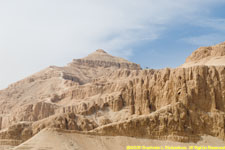
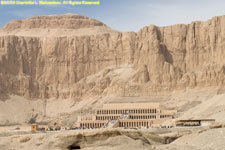
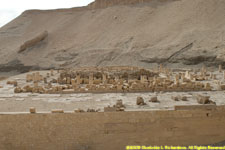
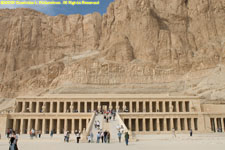
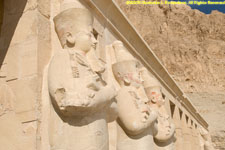
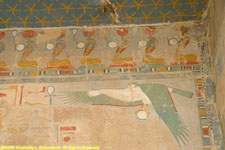
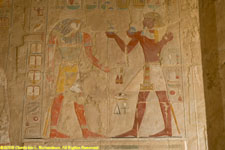
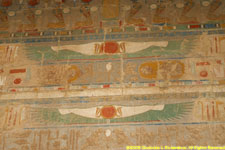
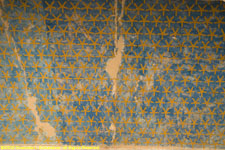
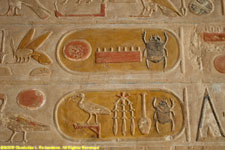
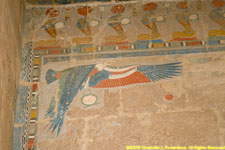
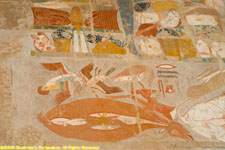
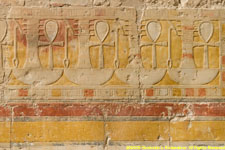
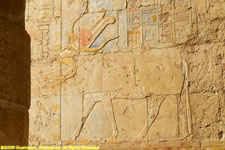
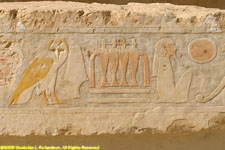
The mortuary temple of Queen Hatshepsut, Egypt's first female pharaoh, in Luxor at Deir al-Bahri is at the foot of a sheer limestone cliff. The pyramid-shaped mountain above the cliff gave the site royal appeal. Inside, the original pigments remain colorful in many of the paintings. An entire wall is devoted to paintings of her expedition to the land of Punt, apparently in the area of Ethiopia on the Red Sea, with her troops in sailing ships, recognizable tropical fish, and the queen of Punt. Hatshepsut lived from c. 1473 to 1458 B.C.E. and was the daughter of Thutmose I. When Thutmose I died, his son Thutmose II succeeded him and married his stepsister Hatshepsut. When Thutmose II died around 1479 B.C.E., his young son Thutmose III became pharaoh, with Hatshepsut as his regent. In 1473 B.C.E., she declared herself pharaoh. She wore a fake beard and male clothing and had herself drawn and treated as a man. She disappeared around 1458 B.C.E. when Thutmose III regained the throne. Next to Hatshepsut's Temple is the ruins of the Temple of Montuhotep II.
©2010, 2016 Mermaid Underwater Photographic. All Rights Reserved.
Contact us at mermaid@underwater.org.
Last modified 29 June 2016